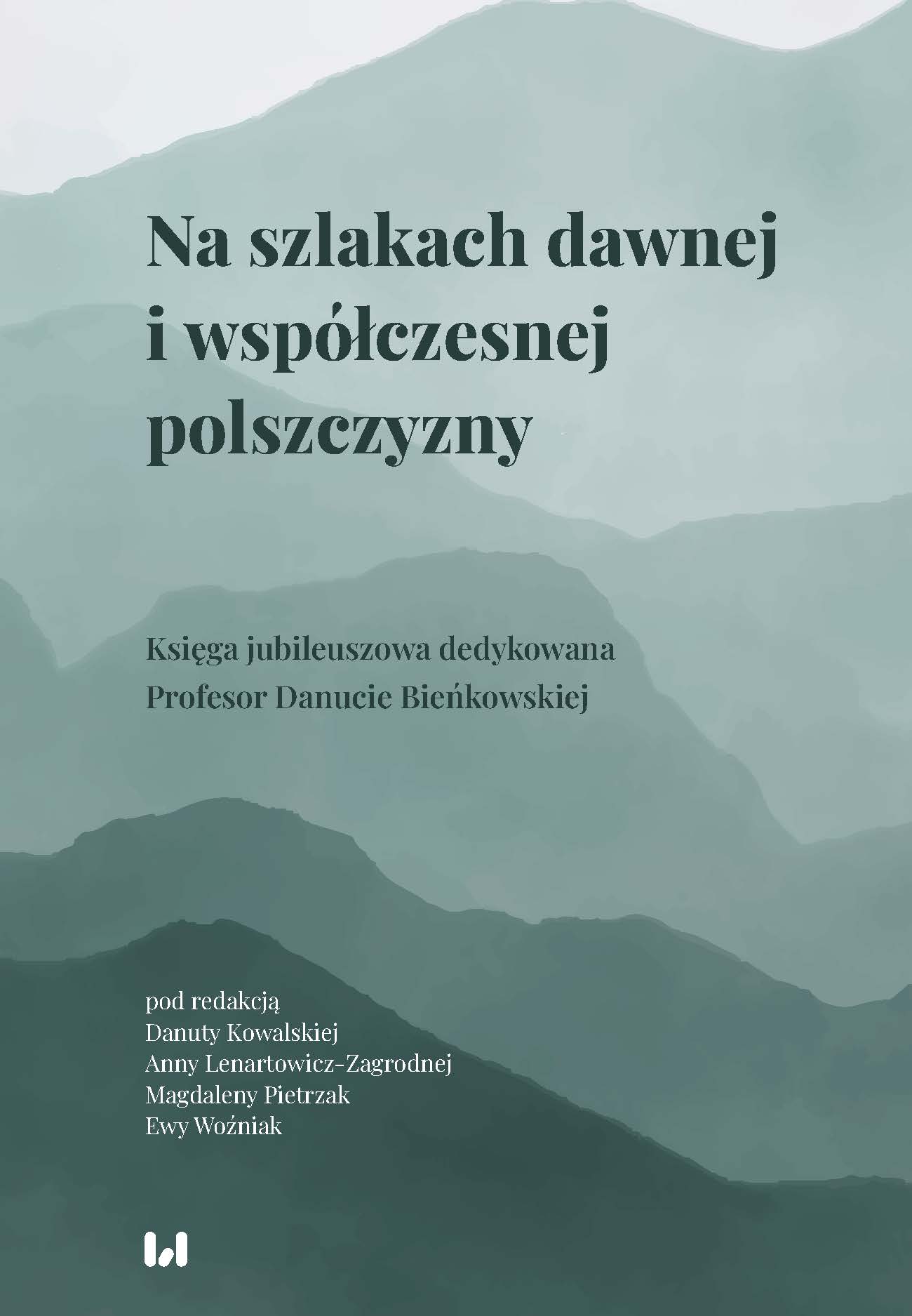Grzesznice i święte. XVI-wieczne formacje na –ic(a)/-yc(a), -nic(a)
Females sinners and saints. Sixteenth-century formations ending with -i/-yc(a) and -nic(a)
Author(s): Joanna Kamper-Warejko, Joanna Kulwicka-Kamińska
Subject(s): Language and Literature Studies, Historical Linguistics, Comparative Linguistics
Published by: Wydawnictwo Uniwersytetu Łódzkiego
Keywords: 16th-century Polish language; historical word formation; feminine names (feminatives)
Summary/Abstract: The subject of considerations of this article are 16th-century feminine names (feminatives) formed with the suffixes ”-i/-yc(a)” and ”-nic(a)”, and derived primarily from masculine personal nouns (masculinatives) ending in ”-ec”, ”-ic”, “-ik”, and ”-nik”. The three female suffixes form nouns belonging to the categories of agents, attributive names, and affinity names. The research material was excerpted from the ”Słownik polszczyzny XVI wieku” [SPXVI, ”The Dictionary of 16th-Century Polish Language”] and included 68 lexemes in 1,097 uses. For the authors, the purpose of the research was to interpret selected 16th-century feminatives by subjecting them to formal historical word-formation analysis, using the lexicographic description contained in SPXVI and other historical lexicons. The analysis was supplemented with an attempt at painting the linguistic image of the woman of the Renaissance era. In the material discussed, the most represented group were the ”nomina attributiva”, an explicatively difficult category. On the other hand, the least represented group were the affinity names. The research demonstrated that modifying derivatives (so-called simple feminatives) were the most frequent in the group of names studied, more than half of which originated in the 16th century. Although some of the examples are nonce words, this fragmentary overview of 16th-century material allowed the authors to formulate several conclusions about the image of the woman of the era, both in the professional context and in the stereotypical perception.
- Page Range: 195-215
- Page Count: 21
- Publication Year: 2023
- Language: Polish
- Content File-PDF

